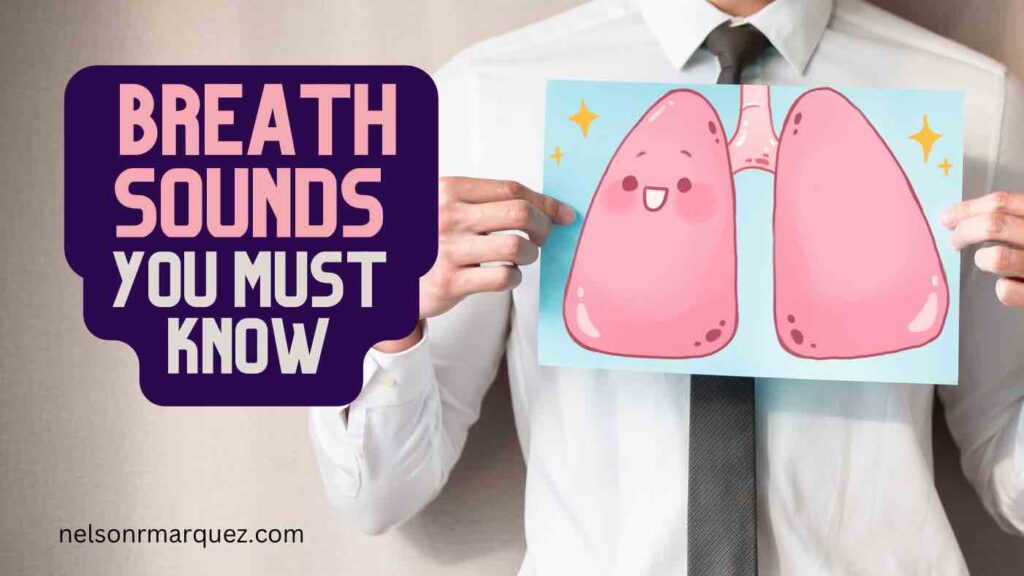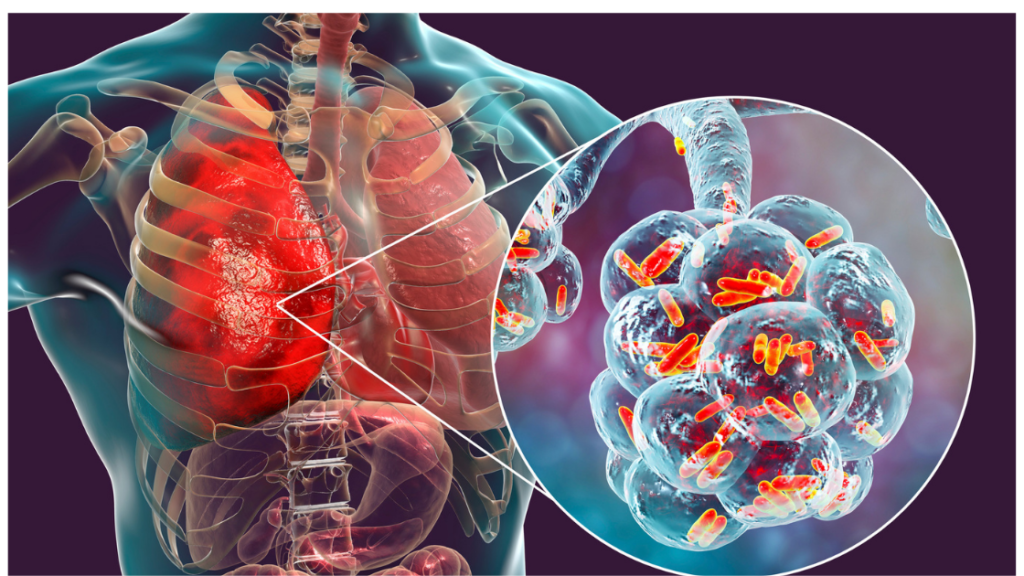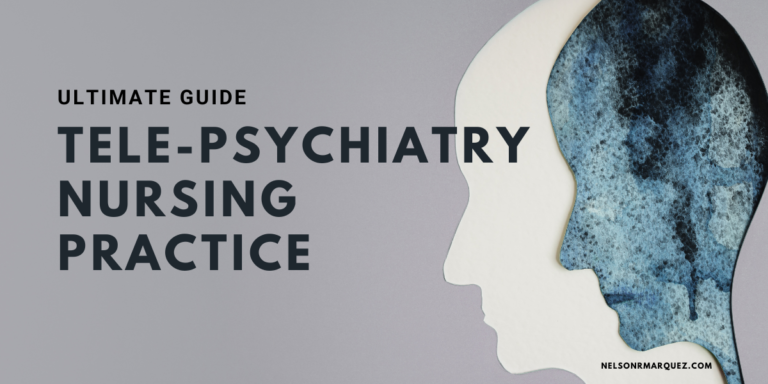4 Primary Adventitious Breath Sounds You Must Know [2024]

Adventitious breath sounds have always piqued the curiosity of healthcare professionals. These abnormal lung sounds can provide vital clues to underlying respiratory problems. Imagine being able to detect a potentially serious condition just by listening to a patient’s breathing.
By the end of this article, you’ll better understand these adventitious lung sounds and their crucial role in evaluating one’s respiratory health.
Key Takeaways
Adventitious breath sounds can be identified through auscultation, electronic stethoscopes and respiratory examinations.
Common conditions associated with adventitious breath sounds include pneumonia, asthma and COPD.
Diagnostic tools for evaluating abnormal breathing sounds include blood tests, imaging techniques, and pulmonary function tests. Sudden onset of abnormal sounds may indicate serious medical conditions requiring immediate attention.
What are adventitious breath sounds?
An Adventitious Lung Sound refers to any abnormal sounds or noises heard during auscultation of the lungs.
These sounds may indicate an underlying medical condition, such as pneumonia, bronchitis, or pleural effusion.
Normal breath sounds ( also called vesicular breath sounds)
Before we dig deep into abnormal lung sounds, let’s establish a baseline and breifly discuss what a normal lung should sound like.
Normal lung sounds are clear, low-pitched breath sounds that are heard throughout the lung fields during inspiration. During expiration, the sounds are slightly louder and are heard near the trachea or larger bronchi. Listen below.
Identifying Adventitious Breath Sounds

In respiratory assessment, there are four primary types of adventitious lung sounds:
Crackles: fine crackles and coarse crackles (also called rales)
Wheezing
Rhonchi
Stridor
These abnormal breath sounds, also known as abnormal breathing sounds, can be continuous or intermittent and may vary in pitch. Recognizing the characteristics of these sounds can help healthcare providers identify possible causes and, ultimately, make an accurate diagnosis.
Methods such as auscultation, electronic stethoscopes, and respiratory examination are employed to evaluate lung sounds, including those produced by the chest wall. Conditions such as pneumonia, asthma, and chronic obstructive pulmonary disease (COPD) are typically associated with adventitious breath sounds during the respiratory cycle.
We will now examine each type of adventitious breath sound in greater detail.
Crackles (also called rales)
Crackles are discontinuous, brief, popping sounds that differ from normal vesicular breath sounds. To classify crackles, they are divided into two categories: coarse and fine. The size of the airway opening helps in identifying the type of adventitious sound. Coarse crackles are generated by larger airway openings, whereas fine crackles are generated by smaller airway openings, both of which can be distinguished from normal bronchial sounds.
Interestingly, coughing, when associated with secretions, may lead to the clearing of an adventitious breath sound like crackles. This simple act can provide valuable information to healthcare providers and aid in the identification of the underlying cause.
Fine Crackles: associated with pulmonary fibrosis, heart failure, atelectasis and interstitial lung diseases.
Coarse Crackles: associated with pneumonia, bronchitis, and pulmonary edema.
Wheezing
Wheezes are high-pitched sounds caused by air moving through narrowed airways, which are considered abnormal breath sounds. The continuous, high-pitched whistling sound of wheezing is caused by fluttering air movements resulting from a narrowing or partial obstruction of the smaller airways (such as bronchioles) due to pus or accumulated fluids.
Wheezing can sometimes be detected without a stethoscope, making it a fairly recognizable adventitious breath sound. Diseases associated with wheezing includes asthma, COPD, acute upper airway infection, allergic reaction. In some cases, GERD can irritate the airway with acid reflux.
Rhonchi
Rhonchi are coarse, low-pitched sounds caused by turbulent airflow in the large airways. These adventitious sounds can be heard during expiration or both inspiration and expiration. The sound is described as gurgling or snoring.
The cause of rhonchi is attributed to turbulent airflow in the large airways, and conditions such as pneumonia, asthma, and COPD are commonly associated with them.
Stridor
Stridor is an alarming sound. It is characterized as loud and high-pitched, and can be heard coming from the upper airways. Children are more likely to experience stridor due to their airways being softer and narrower. This adventitious breath sound can be a vital clue in identifying potential respiratory issues in younger patients.
Diseases associated with stridor includes croup, epiglottitis, vocal cord paralysis, laryngeal or tracheal tumors. It could also be a sign of choking.
Techniques for Assessing Lung Sounds

Various methods are employed to assess lung sounds, allowing healthcare providers to identify normal or adventitious breath sounds. These techniques include auscultation, electronic stethoscopes, and respiratory examination.
We will now provide a detailed breakdown of each of these methods.
Auscultation
Auscultation is the process of listening to breath sounds using a stethoscope. During chest auscultation, healthcare providers can hear normal breath sounds, decreased or absent breath sounds, and adventitious breath sounds. The optimal approach to chest auscultation examination involves exposing the chest and back, having the patient seated in a chair or on the side of the bed, and performing the examination in a quiet area.
This hands-on technique remains a vital part of assessing respiratory health, as it allows healthcare providers to quickly and effectively identify any abnormal lung sounds that may indicate an underlying issue.
Electronic Stethoscopes
Electronic stethoscopes are advanced devices that offer high-performance auscultation with features the following:
Amplification
Noise reduction
Recording sound
Connecting to mobile devices
Bluetooth connectivity
Switching between analog and amplified listening modes
These features enhance accuracy during in-person and telehealth visits.
By using electronic stethoscopes, healthcare providers can improve their detection of abnormal lung sounds, leading to more accurate diagnoses and better patient outcomes.
Respiratory Examination
A respiratory examination involves a comprehensive assessment of the respiratory system, including:
Observation
Palpation
Percussion
Auscultation
Inspection is the visual examination of the chest and abdomen to evaluate the respiratory system. Palpation refers to the physical examination of the chest and abdomen, while percussion involves tapping the chest and abdomen to evaluate the respiratory system.
Auscultation, as previously discussed, is the act of listening to the chest and abdomen to evaluate the respiratory system. These various methods of respiratory examination provide a comprehensive approach to assessing lung health and identifying any abnormal lung sounds that may require further investigation.
Common Conditions Associated with Adventitious Breath Sounds

Having discussed the types of adventitious breath sounds and the techniques to assess them, it’s time to address the common medical conditions that can induce these abnormal lung sounds, including pneumonia, asthma, and COPD.
Pneumonia
Pneumonia is an infection of one or both lungs caused by viruses, bacteria, or fungus, resulting in the air sacs of the lungs being filled with pus or fluid. Signs of pneumonia include:
Coughing
Fever
Difficulty in breathing
Chest pain
Exhaustion
Perspiration
Bacterial pneumonia and certain types of fungal pneumonia can be treated with antibiotics, while antiviral medications may be prescribed for viral pneumonia. Identifying adventitious breath sounds, such as crackles, in patients with pneumonia can aid healthcare providers in diagnosing and treating this potentially serious condition.
Asthma
Asthma is a chronic lung disease characterized by airway narrowing and swelling, leading to symptoms such as wheezing, breathlessness, and chest tightness. The primary signs and symptoms of asthma include wheezing, shortness of breath, chest tightness, and coughing. Asthma is believed to be caused by a combination of environmental and genetic factors, with common triggers including allergens, air pollution, and exercise.
The standard approach to managing asthma involves a combination of medications, such as inhalers and oral medications, as well as lifestyle modifications, like avoiding triggers and engaging in regular physical activity. Detecting adventitious breath sounds, like wheezing, can help healthcare providers diagnose and manage asthma effectively.
COPD
Chronic obstructive pulmonary disease (COPD) is a chronic inflammatory lung disease characterized by airflow blockage and breathing difficulties, encompassing conditions such as chronic bronchitis and emphysema. Smoking is the most common cause of COPD, though other factors including air pollution, genetics, and occupational exposure can also play a role in its development.
COPD is typically diagnosed through a physical exam, imaging tests, and pulmonary function tests. Treatment for COPD includes lifestyle modifications, medications, and oxygen therapy. Identifying adventitious breath sounds, such as wheezing and rhonchi, can help healthcare providers diagnose and treat COPD, ultimately improving the patient’s quality of life.
Diagnostic Tools for Evaluating Adventitious Breath Sounds
![3M Littmann CORE Digital Stethoscope Review [2024]](https://nelsonrmarquez.com/wp-content/uploads/2023/09/litmann3m-1024x1024.jpg)
Various tests and imaging techniques are used to diagnose the causes of abnormal lung sounds. These diagnostic tools include blood tests, imaging techniques like X-rays and CT scans, and pulmonary function tests such as spirometry and peak flow measurements.
We will now discuss into a more detailed analysis of each of these diagnostic tools.
Blood Tests
Blood tests are medical examinations that assess the concentration of cells, chemicals, proteins, or other substances in the blood. They are typically used to monitor general health, diagnose health issues, and evaluate the performance of organs, including the kidneys, liver, thyroid, and heart.
Blood tests can assist in diagnosing infections, anemia, high cholesterol, and other health conditions. Blood tests are typically conducted by taking a sample from a blood vessel in the arm.
By analyzing the results of blood tests, healthcare providers can identify infections or other potential sources of adventitious breath sounds, allowing for a more accurate diagnosis and targeted treatment.
Imaging Techniques
Imaging techniques, such as X-rays, CT scans, and MRIs, are commonly employed to diagnose respiratory conditions. These imaging techniques can provide detailed images of the lungs and airways, helping healthcare providers to identify any abnormalities that may be causing adventitious breath sounds. Chest X-rays and computerized analysis of recorded lung sounds are utilized to evaluate adventitious breath sounds.
With the aid of these advanced imaging techniques, healthcare providers can gain a clearer understanding of the underlying causes of abnormal lung sounds, leading to more accurate diagnoses and improved patient outcomes.
Pulmonary Function Tests
Pulmonary function tests are noninvasive tests that measure lung function and assess the quality of a person’s breathing. Spirometry is a pulmonary function test that assesses the flow of air through the lungs and evaluates their performance. An abnormal spirometry value, which is a value below 80% of the predicted value, can indicate the presence of abnormal lung sounds.
By performing pulmonary function tests, healthcare providers can identify any abnormalities in lung function that may be causing adventitious breath sounds. This information can be invaluable in diagnosing and treating respiratory conditions.
When to Seek Medical Help
Knowing when to consult a healthcare provider or seek emergency care for abnormal lung sounds is crucial. This section provides guidance on recognizing the appropriate time to seek medical assistance for adventitious breath sounds.
It’s important to note that any time you experience difficulty breathing, chest pain, or other concerning symptoms, you
Sudden Onset of Abnormal Sounds
The sudden onset of abnormal sounds, such as:
crackling
wheezing
rhonchi
stridor
may suggest underlying medical conditions like pneumonia, heart failure, pleural effusion, or inflammation.
If adventitious breath sounds develop suddenly or are accompanied by severe symptoms, it is important to seek immediate medical attention. Prompt intervention in cases of sudden onset of abnormal sounds can make a significant difference in the patient’s outcome and overall health. Don’t hesitate to seek medical help if you or someone you know experiences such symptoms.
Summary
Adventitious breath sounds are more than just peculiar noises; they are valuable diagnostic tools for healthcare providers. Understanding the various types of abnormal lung sounds, their characteristics, and the methods used to assess them can help in the early detection and management of respiratory conditions.
By staying informed and vigilant, you can play an active role in your own respiratory health and that of your loved ones. So the next time you hear an unusual sound while taking a breath, remember the importance of understanding adventitious breath sounds and their potential implications on overall health.
Frequently Asked Questions
What do adventitious lung sounds indicate?
Adventitious lung sounds indicate a change in airflow through the lungs, such as asthma or bronchitis. This can lead to clicks, crackles, wheezes, and snoring noises that are used to classify these changes.
What are normal and adventitious breath sounds?
Normal breath sounds are broad-spectrum noises created by air flow in the respiratory tract, while adventitious breath sounds are extra noises superimposed on the normal sound and can be characterized as either continuous or discontinuous. They can be indicative of a respiratory illness such as pneumonia.
What are the 4 abnormal lung sounds and its characteristics?
Abnormal lung sounds include, coarse crackles, fine crackles (also called rales), wheezes, and rhonchi. These sounds can often indicate an underlying health problem and should be discussed with a doctor.
How do you describe normal lung sounds?
Normal lung sounds are typically small clicking, bubbling or rattling noises heard when a person breathes in. These can be further described as moist, dry, fine, and course. Vesicular sounds, which are soft, blowing or rustling, are usually heard throughout most of the lungs fields. Additionally, breath sounds are low-pitched and have a relatively quiet expiratory phase.
What is the difference between crackles and wheezing?
Crackles are popping sounds while wheezing is a continuous whistling sound caused by narrowed airways; the two sounds thus differ in terms of sound type and origin.
Resources:
1.National Center Biotechnology Information (NCBI) NCBI-Lung Sounds
2.PubMed Central-Fine Crackles in Heart Failure
3. American Journal of Respiratory and Critical Care Medicine -AJRCCM Coarse Crackles
![3M Littmann CORE Digital Stethoscope Review [2024] – Is this the best digital stethoscope?](https://nelsonrmarquez.com/wp-content/uploads/2023/09/litmann3m-768x768.jpg)



![7 Best Stethoscopes for Nurses: Listen with Precision [2024]](https://nelsonrmarquez.com/wp-content/uploads/2023/10/best-stethoscopes-768x432.png)
